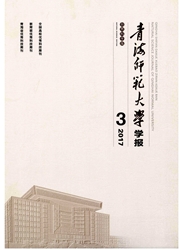

 中文摘要:
中文摘要:
甘青地区齐家文化较前期的马家窑分布北界南缩,整体海拔变低,是对4kaB.E事件中气候干旱和气温降低的响应。齐家遗址较马家窑分布更为稀疏,遗址最短距离变大,对河流的依赖性降低,这一变化与齐家文化时期畜牧业比重的增加相关。密度分析表明4kaB.E前后,马家窑聚落的单核心凝聚模式演变为齐家的多核心模式,极端气候事件使得农业生产能力和资源状况恶化,部落间战争频发,战争可能对父权制度的形成和冶炼技术的进步产生了一定的促进作用,在一定程度上导致甘青史前社会向复杂化发展。
 英文摘要:
英文摘要:
In Gansu-Qinghai Region, compared with the previous Majiayao culture, the distribution of Qijia culture' s northern boundary trended south and the overall elevation lowered, which is the response to 4 200 a B.P. extreme events of arid climate and temperature drop. Distribution of Qijia culture sites are sparser than Majiayao, the shortest distance between sites become larger and the dependence on the river reduced, which shows that animal husbandry came into being during the period of Qijia culture. Density analysis showed that Majiayao single-core condensed settlement model evolved into Qijia's multi-core model around 4 ka B.P.,and it implies that Qijia community splited into several tribal groups .Extreme weather events caused the agricultural productivity de- crease, resource deterioration and frequent inter-tribal war, which stimulated the formation of patriarchy and progress of smelting technology. So extreme weather events around 4 200 a B.E promoted the production of animal husbandry, the establishment of patriarchy and the generation of smelting technology, eventually make the Gan- su-Qinghai prehistoric society complicated and organized.
 同期刊论文项目
同期刊论文项目
 同项目期刊论文
同项目期刊论文
 Reconstruction of cultivated land during mid-holocene in the middle and lower reaches of yellow rive
Reconstruction of cultivated land during mid-holocene in the middle and lower reaches of yellow rive Age determination for a Neolithic site in northeastern Qinghai-TibetanPlateau using a combined lumin
Age determination for a Neolithic site in northeastern Qinghai-TibetanPlateau using a combined lumin 期刊信息
期刊信息
